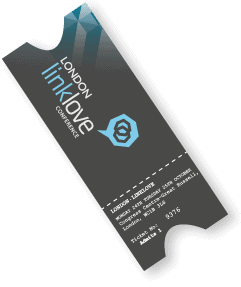(Notes from the real London 2012 event: Link Love)
Presenter: Branko Rihtman
from rankabove.com and seo-scientist.com
Branko is a bit of a scientist (SCIENCE! – love it) and likes playing around with bacteria, and talks about how science has a place in SEO. Scientific principles and the scientific method are always important, and especially in investigating how social media effects linkbuidling. So, as always it relates to data:
SEO and social media
We’ve had everybody talking about how social effects effect SEO, and whether anyone should care. But what is the proof we’re missing?
We need to see a site that has only social signals and no other ranking signals. No links, nothing.
An OK example he’d seen recently is Pinterest, the current darling of the social media world. Looking at their natural rankings they don’t really rank for much, but we need a better analysis than this.
social in linkbuilding
It’s about getting the content out to as many eyeballs as possible, but Branko feels that the process can be done more intelligently and see how we can improve the link acquisition rate above just using a ‘brute force’ impressions-gathering approach.
smarter social linkbuilding
Look at those people who shared your content. What else did those people share? What else did those people like and interact with?
More than this, which of these users have talked and shared more than one of these pieces of relevant content? These users are more important to you.
Finally, which bit of content has been shared most by these people? This content is more important to you, so you should produce more like this.
Good linkbuilding results from maximum impact for the smallest effort – the minesweeper effect!
getting data
We get our information from APIs, but APIs are scary and full of code. So instead of coding things, just scrape.
He used the following APIs:
- Topsy
- Facebook graph
- Twitter API
- G+ API
- MajesticSEO API
Then use Excel and the excellent SEOTools Excel add-in (one which we like very much in the Attacat office.)
So, he used the Topsy API to scrape to see who’d shared a page on Distilled, their Twitter name, and then what other URLs they’ve shared. Pretty amazing (and slightly creepy actually) data – it’s leading you to people who like your content and what content they like to share, and you can compare against SEO metrics to see how that content has performed in generating links. Great insights.
plotting links vs. tweets/shares/likes
He then ran through some graphs visualising how many links were achieved in relation to the social sharing of that same content. These were just meant to be indicative and show a potential relationship between shares and links across different social platforms.
+1s seem to perform much, much, much better than Facebook likes or other shares, which were quite similar (with retweets in Twitter very slightly ahead). It makes sense, because who uses Google+ except online chaps and SEOs?
Remember that these ‘trends’ are not definite – they can provide ideas for content and look good in reports, but they’re not going to provide actual metrics for reporting how successful campaigns have been. And it won’t build the links for you…
the data pt.2
So from two URLs they’d got 214 twitter users, 12k URLs and 3.7K domains. Woop! Now we want to refine and trim this data.
the users
Eliminate the “selfish users” who don’t provide lasting value and identify the “power users” who are going to increase the exposure of your content. Finally, identify all the relevant users within your user list – you can use different tools to filter them by keywords, grade them according to topics, or list them by the sum of links their links achieve overall.
Tip: Don’t target the ‘top tweeters’ in a niche – your message will get crowded out and you want to find the sweet spot where a share will have most value.
the pages and domains
Next you’ll want to look at the value of the pages and domains you’ve found.
Prune out the irrelevant ones (paper.li was given as an example) and assign them with a relevance score (and keep them for future reference). There are so many data sources you can take into account, and you’ll want to use the ones that are relevant to you and store your data for future use.
the final word
Social is lovely, but the only thing that’s really going to effect your ranking is links. Just like content creation this kind of social analysis is the ‘means to the end’ for finding relevant communities and achieving links – it’s research for finding ways of generating links.
Search will evolve, and he says we should follow Google’s advice of “Try to be where search engines want you to be” – do things right and results will follow.
Branko reaffirms that we should never believe something works. There is either data to support something or there is not. Smart marketers will take this kind of analysis into account.

